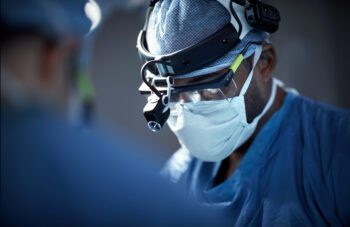Introduction to the Cervical Spine
Dr. Rita Roy, CEO of the National Spine Health Foundation, opened an engaging discussion on the cervical spine at the Cervical Spine Research Society meeting in San Diego. Moderated by Dr. Tom Schuler, Chairman of the foundation’s Medical and Scientific Board, the panel featured top experts including Dr. Todd Albert, Dr. Jeffrey Wang, Dr. Alexander Vaccaro, Dr. Rick Sasso, and Dr. James Harrop. The panel aimed to educate the public on the structure and health of the cervical spine, commonly known as the neck.
Anatomy of the Cervical Spine
Dr. Albert began by explaining the anatomy of the cervical spine, which consists of seven vertebrae housing the spinal cord—a vital structure connecting the brain to the entire body. The cervical spine’s primary function is to control the arms, hands, and upper body movements, as well as essential functions like leg movement, balance, and even bowel and bladder control. Understanding this anatomy is crucial, as it lays the foundation for comprehending various neck problems and their treatments.
Common Causes of Neck Pain
Dr. Wang and Dr. Sasso discussed the common causes of neck pain, noting that it often stems from muscles, ligaments, and poor posture rather than more severe issues like disc herniation. They emphasized that most neck problems can be treated non-operatively with anti-inflammatory medications, physical therapy, and home exercise programs. Only a minority of neck pain cases require surgical intervention, highlighting the efficacy of conservative treatments in managing most neck-related issues.
Non-Surgical Treatments
Dr. Harrop elaborated on non-surgical treatments such as massage, acupuncture, and chiropractic care, which can be beneficial for mild to moderate neck pain. He noted that spinal disorders are common, and conservative care often alleviates symptoms effectively.
The panel underscored the importance of not delaying medical evaluation for persistent neck pain beyond six to eight weeks, especially to rule out serious conditions like fractures, osteoporosis, or even cancer.
Advances in Surgical Technology
The panel also discussed surgical options for those whose neck problems do not respond to non-operative treatments. Dr. Albert highlighted advancements in preserving neck motion through techniques like disc arthroplasty, which involves replacing the disc in the front while maintaining healthy facet joints in the back.
Dr. Vaccaro added that hybrid procedures combining fusion and motion-sparing techniques could reduce the risk of adjacent segment disease, enhancing patient outcomes even further.
The Impact of Modern Imaging and Robotics
Dr. Harrop pointed out that advancements in diagnostic tools, such as MRI and augmented reality, have significantly improved the ability to identify and treat neck problems. These technologies enable more precise visualization of spinal structures, making surgeries safer and more effective.
Dr. Vaccaro mentioned the potential future applications of robotics in cervical spine surgery, which could enhance precision and reduce surgeon fatigue, though this technology is still in the early stages of approval and implementation.
Expert Advice and Patient Reassurance
The panelists collectively emphasized that seeing a spine surgeon does not necessarily mean surgery is imminent. Dr. Sasso reassured the audience that only about 5% of patients evaluated by competent spine surgeons ultimately require surgical intervention. Dr. Wang and Dr. Vaccaro reinforced the importance of seeking expert opinions and understanding that modern spine surgeries are sophisticated and can significantly improve quality of life when necessary.
Closing Thoughts and Encouragement
In summary, the discussion at the Cervical Spine Research Society meeting highlighted the importance of understanding cervical spine anatomy, the efficacy of non-operative treatments, and the advancements in surgical technologies. Experts encouraged patients to seek timely medical advice and leverage available resources to make informed decisions about their spine health.


